KINGS, Farmers AND TOWNS, CHAPTER 2 HISTORY, CLASS 12, HISTORY
Kings, Farmers and Towns Early States and Economies (600 BC – 600 AD)
1. Who first deciphered the Brahmi and Kharosthi scripts?
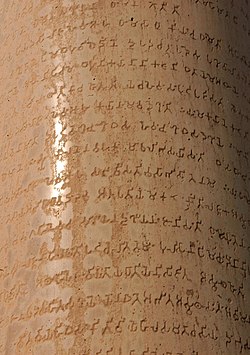
*James Prinsep – Ashoka’s coins and inscriptions were discovered in the 1830s.
2. Which king/emperor was called ‘Priyadassi’,
*Ashoka/Ashok.
3. What was the total number of Mahajanapadas? Which was the most powerful Mahajanapada?
*There were 16 Mahajanapadas, Magadha was the most powerful.
4. Who ruled the Mahajanapadas called Ganas or Sanghas?
A group of people. For example, ‘Kosala’ was a Sangha/Gana.
5. To which caste and order did Lord Mahavira and Mahatma Buddha belong?
*Both were Kshatriyas and belonged to Ganas/Sanghas.
6. In which language was the oldest inscription written?
*Prakrit language.
7. What was the initial capital of Magadha?
*Rajgir/Rajgriha.
8. Who made Pataliputra the capital of Magadha and when?
*Udayin in the fourth century.
9. Who was the founder of the Maurya dynasty?
*Chandragupta Maurya
10. Which Greek ambassador came to Chandragupta Maurya’s court and wrote which book?
*Megasthenes’ book Indica
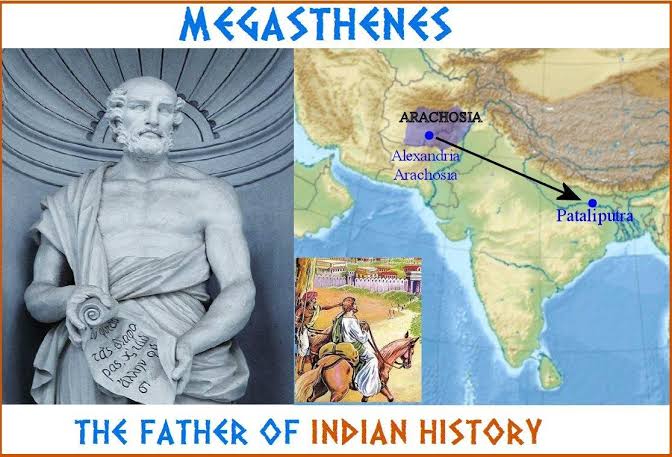
11. Where was the Mauryan Empire located and what was its capital?
* Empire: Magadha, Capital: Pataliputra
12. Which ruler’s inscriptions are considered the oldest?
*Ashoka’s
13. Which region was famous for its gold mines during the Mauryan period?
* Suvarnagiri, present-day Kolar (in Karnataka state)
14. Who was the author of the Arthashastra?
*Chanakya (Kautilya/Vishnu Gupta).
15. Which ruler gave the message of ‘Dhamma’?
*Ashoka.
16. Prayag Prashasti describes the qualities of which king/ruler and who wrote it?
*Samudra Gupta (ruler) Harishena (court poet).
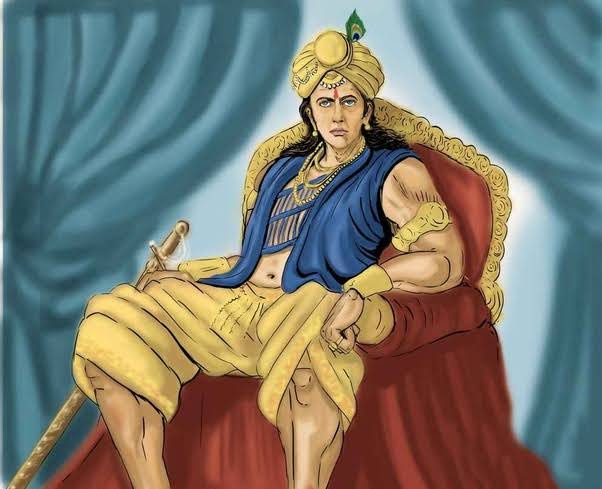
17. What is India’s most famous and oldest legal text?
*Manusmriti (written by Maharishi Manu).
18. Explain the meaning of Sangam? In which language was Sangam literature written?
*Assembly/organization/group of scholars, poets, and intellectuals – language ‘Tamil’
19. What were the methods of increasing yields in the sixth century BCE?
*Development of irrigation facilities, use of iron-shafted plows, rice processing, growing different crops (crop rotation)
20. Whose daughter was Prabhavati Gupta?
*Chandragupta II’s
21. What were the early trade guilds called?
*shrenee
22. What is the study of coins called?
*Numismatics
23. When did James Prinsep succeed in deciphering the language and script of Ashoka’s inscriptions?
*In 1838
24. Whose title was Devanapriya or Devanapiye?
*Ashoka/Asok
25. It is the origin of almost all scripts used in modern Indian languages.
*Brahmi script
26. In which language were Buddhist scriptures written?
*Pali language
27. Which rulers first introduced gold coins?
*Kushan rulers (Kanishka is a famous ruler)
28. Which emperor/ruler had messages for his officials and subjects inscribed on natural stones and polished pillars?
*Ashoka/Asok.
29. How many provinces was the Mauryan Empire divided into?
*The Mauryan Empire was primarily divided into four provinces, with their capitals at Tosali (east), Ujjain (west), Suvarnagiri (south), and Taxila (north). These four provinces were located outside the imperial capital, Pataliputra, and were ruled by members of the royal family or princes as governors.
Provinces and their capitals UK
Prachin (eastern province): Capital Tosali.
Uttarapatha (northern province): Capital Taxila.
Avantiarashtra (western province): Capital Ujjain (Ujjayini).
Dakshinapatha (southern province): Capital Suvarnagiri.
30. Whose guru was Chanakya/Vishnu Gupta/Kautilya?
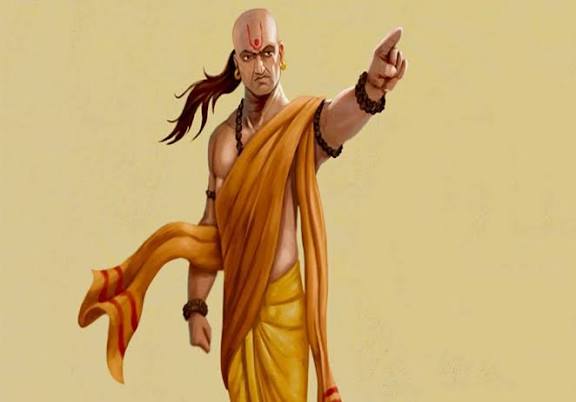
*Chandragupta Maurya
31. Who issued the most “magnificent” gold coins?
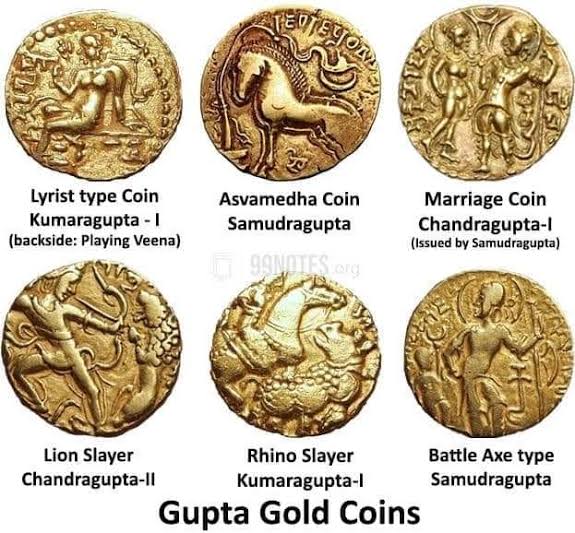
*Gupta rulers
32. What is a prime example of a woman’s right to property?
*Prabhavati Gupta (daughter of Chandragupta II), Gupta dynasty
33. Kashi was the capital of which district?
*Varanasi
34. Whose capital was Kaushal?
*Shravasti
35. What was the capital of Gandhara?
*Taxila
36. When did Alexander invade India?
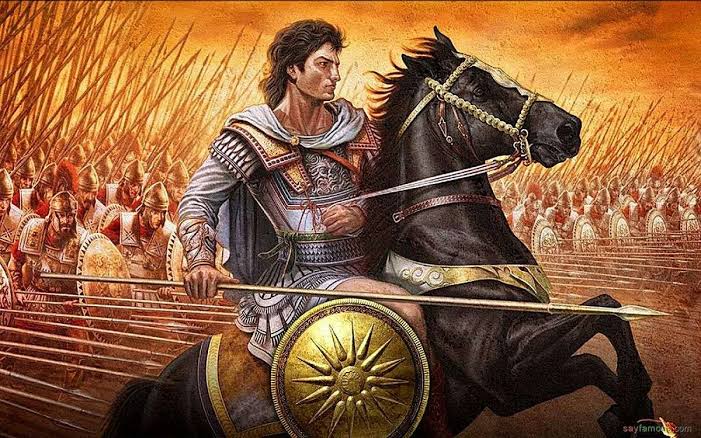
*326 BC
37. Which dynasty ruled India at the time of Alexander’s invasion?
*Nanda dynasty.
38. Who was the founder of the Maurya dynasty and when was it established?
*Chandragupta Maurya 321 BC
39. Mricchakatikam in Vishakhadatta’s work Mudrarakshasa
*Shudraka
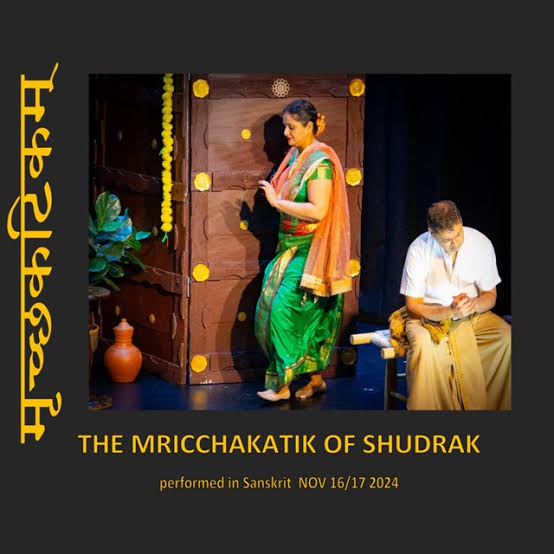
40. Who is considered the greatest ruler of the Maurya dynasty?
*Ashoka
41. What is the modern name of Kalinga? When was the Kalinga War fought?
*261 BC Ashoka vs Kalinga; modern name ‘Orissa’
42. Which official was appointed by Asanka to be in charge of Buddhism?
*Dhamma Mahamatra
43. From which pillar was the current national emblem of India taken?
*Sarnath pillar

44. What was the silver coin prevalent during the Maurya period called?
*Pan
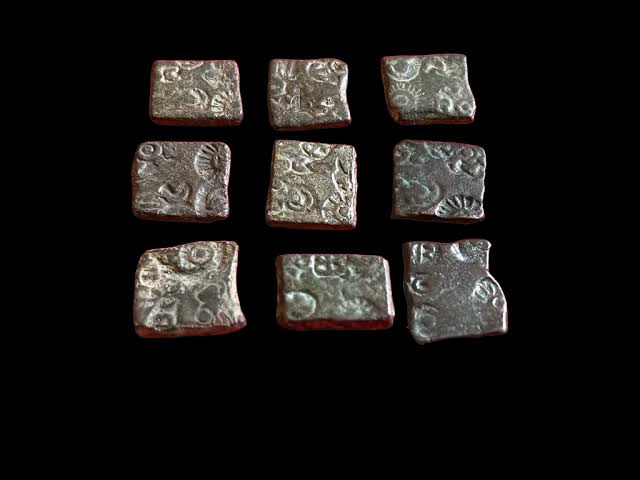
45. When did the Saka era begin?
*78 AD
46. Where was the capital of the Kushan ruler Kanishka?
*Purushapura (Peshawar)
47. Where did Kanishka hold the fourth Buddhist council?
*In Kashmir
48. Which art form flourished during Kanishka’s reign? What title did he assume?
*Gandhara art: Title of Devputra
49. Which religion did Kanishka adopt?
*Buddhism
50. What were the major kingdoms of South India?
*Chola, Chara, and Pandya
51. When did rice cultivation begin in India?
*600-300 BC
52. Who was the founder of the Gupta dynasty?
*Shri Gupta
53. What was the land donated to Brahmins called?
* Agrahara
54. The great and powerful ruler of the Gupta dynasty was _____.
*Samudra Gupta
55. Who was called the Napoleon of India?
* Samudra Gupta
56. Who called Samudragupta the Napoleon of India?
* Y. A. Smith
57. Who is the author of Harshacharita?
*Banabhatta (court poet)
58. Which was the famous port on the west coast of India?
*Bharuch/Bhairukacchha
59. The capital of Harshvardhan was _?
*Kannauj
60. Author of Mahabhashya and Kamasutra?
*Patanjali of Mahabhashya; Vatsayana of Kamasutra
61. Author of Rajatarangini?
*Kalhana (History of Kashmir)
62.Large landowners in South India were called _.___.
*Bellar
63. Famous mathematician of the Gupta period____ _.
* Aryabhatta
64. Mahavira belonged to the Vajji kingdom, while Mahatma Buddha belonged to the Shakya clan of Kapilvastu. Both were Kshatriya princes.
65. What were the Jataka tales about? In which language was it written?
*Written in Pali, from the previous birth of the Buddha.
66. Famous physician of the Kushan period _____l
*Charaka
67. In Tamil, the trade union of merchants was called_______.
* Mastdhuvan.
68. What does oligarchy mean?
*Oligarchy is a form of social organization in which political power is primarily held by a wealthy elite. This wealthy elite constitutes a small portion of the population and uses this political power to protect the interests of their own class.
69. Information about which ruler is found in the Hathi Caves inscription?
*Kharavela, present-day Odisha state
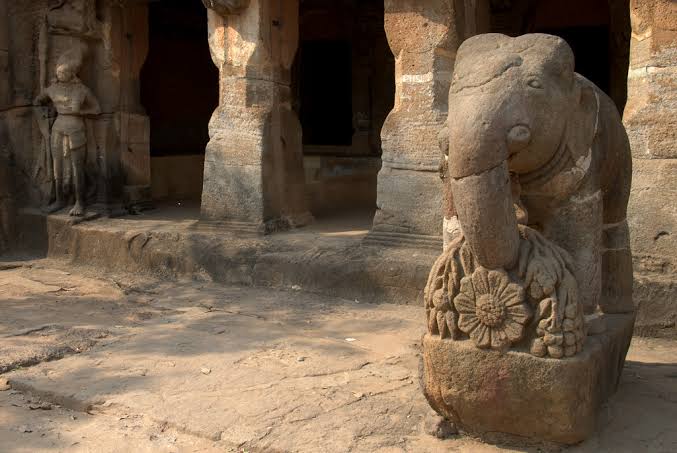
70. When and who founded the Bengal Asiatic Society?
* Sir William Jones in 1784
71. In which language was the Dharmashastra (Dharmasutra) written?
*Sanskrit
72. Where is the Sudarshan Lake? Who repaired it?
*Sudarshan Lake in Girnar (Gujarat), repaired by Rudradaman
73. In which language are the Ramayana, Gita, Mahabharata, and Manu Smriti written?
*In Sanskrit
74. When was the Manu Smriti compiled?
*Between 200 BC and 200 AD
75. Who was Prabhavati Gupta married to?
*Prabhavati Gupta was married to the Vakataka ruler Rudrasena II, daughter of Emperor Chandragupta II of the Gupta Empire and Queen Kubernaga. This marriage was an important strategic alliance between the Gupta and Vakataka dynasties, strengthening Gupta power in the Deccan region.
76. During whose reign did the Chinese traveler Xuanzang visit India?
*Harshavardhana
77. By what name were early coins in India known?
*Ahat coins or punch-marked coins
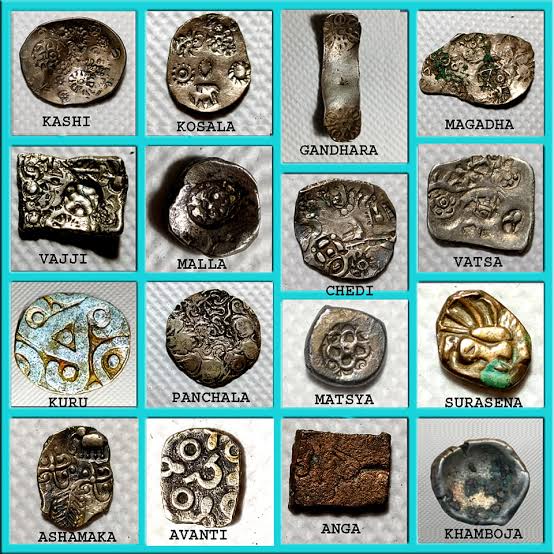
78. Who is the author of the “Periplus of the Erythraean Sea”?
*Unknown Greek author, probably a sailor or merchant.
79. In which language were most of Emperor Ashoka’s inscriptions written?
*In Prakrit – (Most of Emperor Ashoka’s inscriptions were written in Prakrit, the language spoken by the common people. These inscriptions were primarily in Brahmi and, in some areas, in Kharosthi script, allowing Ashoka to effectively disseminate his messages across the vast empire. Additionally, inscriptions in Greek and Aramaic are also found in the northwest of the subcontinent, reflecting the diverse communication methods available across the geographical context.)
80. Which inscriptions mention Emperor Ashoka’s name?
*In the Gurjara and Maski inscriptions
81. During this period, 16 Mahajanapadas emerged, of which Magadha, Kosala, Kuru, Panchala, Gandhara, Vajinja, and Avanti were the major Mahajanapadas.
82. What were the reasons for Magadha’s power?
*Fertile land, availability of elephants in the forests, iron mines, riverine transportation, capable and ambitious rulers, secure capitals, and a large army.
83. What are the sources for understanding the history of the Maurya dynasty?
*Archaeological excavations, inscriptions, coins, literature, eulogies, jewelry, pottery, Megasthenes’ Indica, Vishakhadatta’s Mudrarakshasa, dry seasons, and inscriptions.
84.The sixth century BCE is considered a transformative period because of: (1) the rise of early city states, (2) the extensive use of iron, (3) the propagation and spread of Buddhism and Jainism, (4) the development of coinage, (5) the emergence of powerful rulers, and (6) the rise of a vast empire like Magadha.
85. What are the sources for understanding the development of the Gupta Empire?
*Archaeological excavations, inscriptions, coins, literature, eulogies, jewelry, and pottery.
86. The five major political centers of the Mauryan Empire were Pataliputra, Taxila, Ujjaini, Tosali, and Suvarnagiri.
87. Prosperous and stable kingdoms such as the Cholas, Cheras, and Pandyas emerged in South India.
88. Merchant union were called____ _.
*shrenee/guilds
89. Studying inscriptions provides information on important facts such as the language of the past, the name of the king, dates, and messages.
90. Limitations of the inscriptions: The letters are lightly engraved, some letters are lost due to the inscriptions being broken, the actual meaning cannot be deciphered, the language is difficult and unclear, daily life experiences are not present, the king’s personal thoughts are written rather than those of the public, and they describe special occasions.
91. The Kushan rulers adopted the title of “Devaputra” (son of the god), which was probably inspired by the Chinese rulers, who called themselves “sons of heaven.”
92. A prashasti is an inscription that exaggerates the qualities of the king. Harishena, the author of the Prayag Prashasti, exaggerates the qualities of Samudragupta. It is also known as the Allahabad Pillar Inscription.
93. Sudarshan Lake was built by Pushpagupta, a local governor during the Mauryan period. Ashoka’s governor Tushaspa dug a canal from it, and the Shaka ruler Rudradaman repaired it.
94. Mudda Shastra is the study of coins. It analyzes the images, inscriptions, and metals found on coins.
95. Importance of Inscriptions: Inscriptions are usually engraved on hard surfaces like clay pots. Their study is called epigraphy; they are permanent evidence. They contain details of donations made to religious institutions. The earliest inscriptions were written in Prakrit language. These inscriptions documented the achievements, qualities, ideals, and thoughts of the then rulers. They also bore the date of their construction.
96. Ashoka initiated the doctrine of Dhampa.
97. Jataka tales relate to the previous lives of the Buddha.
Important Questions
Q1. Distinguish between Janapadas and Mahajanapadas? Explain the characteristics of Mahajanapadas?
Q 2. Describe the various sources for the history of the Maurya dynasty.
Q 3. Describe the various sources for understanding the history of the Gupta dynasty.
Q4. What is an inscription? Explain the main features or importance of inscriptions? Describe the limitations (shortcomings) of inscriptions?
Q5. What is a prashasti? Who is the author of the Prayag Prashasti? Which ruler’s qualities are described in it?
Q6. Who was James Prikshepa? Describe his contribution to the development of Indian epigraphy?
Q7. What were the reasons for Magadha’s greatest power?
Q8. The period of the first millennium BC (from the sixth century BC to the sixth century AD) is considered an important turning point in world history. Explain this period.
Q9. Describe the main features of Ashoka’s Dhamma.
Q10. Explain the methods adopted by farmers from 600 BC to 600 AD to increase agricultural productivity.
Q11. Elucidate the importance of coins in Indian history.
Q12. Describe the contributions of King Ashoka to Indian history.
Q13. Explain the key features of the administration of the Mauryan Empire.
Q14. Why was Ashoka called the Great Ruler?
Question 1. Distinguish between Janapadas and Mahajanapadas. Describe the characteristics of Mahajanapadas.
Answer:
(a) Differences between Janapadas and Mahajanapadas:
Janapadas = regions/states formed by small tribes or villages; mostly local governance and tribal in nature.
Mahajanapadas = large political unions/states with large areas, large populations, and organized administration; emerged as national/regional entities.
Janapadas are local, with limited resources and simple government systems; Mahajanapadas featured cities, forts, permanent capitals, and professional armies.
(b) Main characteristics of the Mahajanapadas (point-wise):
Large land area and population—These were larger and more centralized than smaller state units.
Development of political centers/cities—Capitals and large trading centers developed (e.g., Rajghat, Pataliputra, etc.).
Organized administration and military—State systems, tax systems, and professional soldiers.
Economic prosperity—Growth of agriculture, urban craftsmanship, and long-distance trade.
Iron use and technological advancement—The use of iron plows and weapons increased.
Bureaucracy and state accounting—Administrative records and government appointments are found.
Religio-cultural plurality—Influence of Buddhist, Jain, and Brahmanical traditions.
Political diversity—Some were also republics (e.g., the Vajji Sangha), while most were feudal monarchies.
Question 2. Describe the various sources for the history of the Maurya dynasty.
Answer:
Main sources and their importance/limitations (point-wise):
Ashoka’s Edicts (Pillar/Stone Edicts)
Importance: Contemporary, clearly reflecting state policy, religious policy (Dhamma), administrative instructions, and social policies.
Limitations: Written from the ruler’s perspective; lacking in-depth information on socio-economic life.
Foreign Writings (Megasthenes’ “Indica,” Greek/Greek writings)
Importance: Descriptions of India’s administration, society, and economy by foreigners; description of Pataliputra.
Limitations: Occasional exaggerations, interpretation errors, and partial factuality.
Buddhist and Jain Literature (Dipavassa, Mahavamsa, Ashokavadana, etc.)
Importance: Religious events, stories of Ashoka’s religious propagation, accounts of missionaries.
Limitations: Narrative overtones, later revisions, doubts about full historicity.
Puranic Literature
Significance: Genealogical and chronological information.
Limitations: Chronological errors, minor historical inaccuracies.
Numismatics (Coins) and Archaeology/Monuments
Significance: Economic life, currency, art, architecture, and city remains.
Limitations: Coins alone do not provide complete political details.
Modern Archaeological Excavations and Epigraphy
Significance: New evidence and topographic evidence that aid historical reconstruction.
Limitations: Incomplete preservation of inscriptions, complexity of interpretation.
Conclusion: A proper study of Mauryan history is achieved only through a comparative analysis of these integrated sources—taking into account the strengths and limitations of each source.
Question 3. Describe the various sources for understanding the history of the Gupta dynasty.
Answer:
Main sources and their uses (point-wise):
Prashastis (e.g., Prayag/Allahabad Prashasti – Samudragupta’s Prashasti)
Importance: Describes the emperors’ conquests, state system, grandeur, and state policy.
Example: Prayag Prashasti – composed by Harishena; source of Samudragupta’s military and political claims.
Coins (gold dinars/coins)
Importance: Economic prosperity, engraving of rulers’ names, art forms, and cultural influence (Greek influence).
Books and dramatic literature (Kalidasa, etc.)
Importance: Cultural – indicates modern life, art and literature, and royal patronage.
Limitations: Cannot be considered direct historical evidence due to literary style.
Foreign travelers (e.g., Fa-Hien’s account)
Importance: Direct description of Buddhist religious life, social system, and universities – Nalanda, etc.
Limitations: A traveler’s experience may be somewhat fragmented; personal perspectives prevail.
Copper plates and inscriptions (local records)
Importance: Information about land grants, administrative systems, local kings and officials.
Puranas and popular genealogies
Importance/limitation: Helpful in determining lineage and period; but may contain some contradictory information.
Conclusion: The Gupta period is studied through a combination of inscriptions, coins, literature, and travelogues—a comparative interpretation of these sources is crucial.
Q4. What is an inscription? Explain the main features or importance of inscriptions? Describe the limitations (shortcomings) of inscriptions?
Answer:
(a) Definition:
Inscription = Permanent writing carved/written on stone, metal, pillars, or copper plates, etc., that records government announcements, royal orders, eulogies, donations, etc.
(b) Main Characteristics/Importance of Inscriptions:
Contemporary Primary Sources — They provide direct documentary evidence of the time.
Permanent Nature — Being written on stone/metal, they remain preserved for a long time.
Evidence of Language and Script — Language, script, and writing style help determine the period (paleography).
Political and Administrative Information — Weaknesses include kings’ orders, taxes, land grants, and the names of administrative positions.
Religious and Social Information — Gifts, religious rituals, and religious propagation.
Economic and Cultural Indications — Evidence of currency, measurement, trade policies, and art styles.
(c) Limitations (Weaknesses) of Inscriptions:
Biased/Official Perspective — Most inscriptions are eulogies or official declarations of the ruler; Negative aspects of public life are rarely mentioned.
Partial/fragmentary evidence — Many inscriptions are found in fragments; the full context is lacking.
Difficulty interpreting language/script — Errors in script translation are possible.
Regional/thematic limitations — Focusing on a specific problem/event, it does not provide a comprehensive social history.
Confusion in determining the period — Sometimes the period indications are unclear or are later additions.
Question 5. What is a prashasti? Who is the author of the Prayag Prashasti? Which ruler’s qualities are described in it?
Answer:
Prashasti (Eulogy / Prashasti) = a record/writing describing the glory of a ruler or dynasty; glorifying victory, religion/policy, and royal virtues.
The author of the Prayag Prashasti (Allahabad / Prayaga Prashasti) = Harishena — believed to be a royal poet/official.
Praise of which ruler? — This eulogy specifically describes the victories and qualities of Samudragupta (detailed descriptions of his valor, policy behavior, victories, and cultural patronage).
Significance: It is a major source for reference on Samudragupta’s political rise, war strategy, death count, and historical events.
Question 6. Who was James Prikshepa? Describe his contribution to the development of Indian epigraphy?
Answer:
Introduction: James Prinsep—19th-century British scholar, numismatist, and researcher associated with the Asiatic Society.
Main Contributions (Point-by-Point):
Major role in the decipherment of the Brahmi script: Prinsep fostered modern epigraphy by studying the articulation and reading of Brahmi letters; this greatly contributed to the understanding of Ashokan inscriptions.
Systematic study of coins (Numismatics): He collected, classified, and interpreted Indian coins—providing historical chronology and commercial evidence.
Publishing and disseminating inscriptions: Prinsep collected and published numerous inscriptions and articles, and established research; he disseminated this information through the Asiatic Society.
Foundation of Modern Epigraphy: His work made the study of Indian inscriptions a systematic science.
Significance: Prinsep’s work made possible the scientific and systematic study of the inscriptions of Ashoka and ancient Indian kings—which revolutionized the understanding of ancient Indian history.
Question 7. What were the reasons for Magadha’s rise to power?
Answer:
Major reasons for the Magadha Empire’s strength (point-wise):
Geographical location: Situated along the Gangetic plains and rivers, the agricultural sector was fertile and the transportation system strong; the capital, Pataliputra (Patna), enjoyed a central position.
Agricultural economy and resources: Fertile soil, irrigation, and grain reserves; the economy was strong.
Iron resources and weapons industry: Nearby iron ore and weapons manufacturing enhanced military strength.
Strategic innovations: War strategy, powerful female elephant contingent, and a well-organized army.
Political leadership and expansionist policies: The rise of Bimbisara, Ajatashatru, the Nanda and Mauryan dynasties brought about expansion and concentration.
Administrative capabilities: Diplomacy, federalism, tax collection, and bureaucratic capabilities.
Control of trade routes: Control over trade routes from the northeast and foreign trade.
Cultural and religious authority: Patronage and state support for Buddhist and Jain sects, which maintained internal harmony.
Question 8. The period from 600 BCE to 600 CE is considered a turning point in world history. Explain this statement.
Answer:
This period (600 BCE – 600 CE) is considered significant in history because it witnessed decisive political, philosophical, religious, and economic changes throughout the world. Key Points:
Rise of Axial Age: (called the “Axial Age” by Karl Jaspers) — Ideologies such as those of Buddha and Mahavira in India, Confucius and Lao Tzu in China, Plato/Aristotle in Greece, and Zoroaster in the Middle East emerged — providing new standards for philosophy, ethics, and religion.
Rise of Empires from Mahajanapadas/Dictatorships: The Persian Empire, Magadha/Maurya, Greco-Roman states, and the Qin and Han in China — led to the birth of large, centralized states.
Influence of Religious Movements: The rise of Buddhism and Jainism (India), the introduction of Christianity (1st century CE), and the development of Zoroastrianism — impacted socioeconomic and political thought.
Expansion of Trade Networks: Long-distance trade routes (Roman-Indian trade, Silk Road) developed, increasing cultural and economic exchange.
New administrative and technological developments: Writing systems, law, military organizations, urbanization, and systems of machinery (irrigation, mining, rivers) organized society.
Cultural and artistic prosperity: Literature, architecture, and art flourished—e.g., art of the Mauryan and Gupta periods, the influence of Greek art, etc.
Conclusion: The period from 600 BCE–600 CE is pivotal in world history because it laid the foundation for modern religious/ideological traditions, major political institutions, and inter-regional contacts, shaping the future civilizations.
Question 9. Describe the main features of Ashoka’s Dhamma.
Answer:
The main features of Ashoka’s Dhamma (point-wise):
Insistence on non-violence: Avoidance of violence and a tendency toward compassion—especially avoiding animal abuse and unnecessary wars.
Religious tolerance: Respect for all religions and a message of no state-sponsored coercion.
Moral conduct: Promotion of truth, kindness, charity, keeping promises, and restraint.
Welfare measures: Hospitals, drinking water sources, tree plantations, roadside restrooms, etc.—emphasis on public welfare.
Ethics in governance: Enforcing punishment, justice, and moral discipline through state officials (Dhamma Mahamatras).
Means of propagation—Edicts: Written promulgation of the principles of the Dhamma on pillars and stones (Edicts).
Social unity and discipline: Propagation of the Dhamma to maintain harmony among different communities.
Example: Ashoka’s edicts repeatedly mention these policies—such as prohibitions against animals, the virtue of righteousness, and ethical instructions regarding administrative appointments.
Question 10. Describe the methods adopted by farmers during 600 BC–600 AD to increase agricultural productivity.
Answer:
Major agricultural improvement practices (point-wise):
Use of iron-based plows and tools—Iron plows and tools made it possible to plow the land and plow deeper; this increased yields.
Irrigation systems—wells, hand-held water-lifting devices, channels/canals, ponds/tanks (dams like Kalenai/Kallanai in South India)—increased water availability.
Land Expansion and Deforestation—Cultivated land expanded due to population and demand; forests were cleared to create agricultural land.
Fertilizer Use—Use of organic manures like cow dung; mulching and soil improvement.
New Cropping Frequencies and Multiple Cropping Systems—Using/Changing Multiple Crops in a Single Year; Mixing Pulses and Cereals.
Integration of Animal Husbandry—Using Animals (Bullocks) for Plowing, Fertilizer, and Agricultural Operations.
Seed Selection—Selection and Conservation of Improved Seeds, Use of Better-Producing Varieties.
Local Technological Innovations—Yield Improvement through Field Drainage/Terracing, Water Storage, and Field Maintenance.
Commercial Farming and Market Linkages—Access to Markets has encouraged farmers to grow profitable crops and enabled investment.
Note: These measures varied by region and time; overall, the contributions of irrigation and iron tools are considered the most important.
Q 11. Highlight the importance of coins in Indian history.
Answer:
Importance of Coins (Numismatics) (point-wise):
Source for Economic History: They provide evidence of currency types, metals (punch-marked, takas, dinars), and commercial transactions.
Indicator of Central and Symbolic Authority: Coins become a symbol of the ruler’s power and authority (royal printing).
Dating and Dynasty Identification: The names/titles and images on coins make it possible to estimate rulers and periods.
Cultural and Artistic Signs: Deities, symbols, and artistic forms on coins reveal cultural exchanges (Greek influences, etc.).
Indications of Geographical Trade Routes: Foreign currencies and coin hoards indicate distant trade relations.
Evidence of Script and Language: Engravings on coins help in the study of script and linguistics.
Supplementary Information on Political History: An Indication of Wars, Treaties, and Retro-Economic Policies.
Examples: Old (6th–3rd BCE) punch-marked coins, Mauryan and Gupta period gold coins (dinars)—all offer different historical evidence.
Q12. Describe the contributions of King Ashoka to Indian history.
Answer:
Ashoka’s major contributions (point-wise):
Political unity and expansion: He consolidated and expanded the Mauryan Empire.
Dharma-based state policy (Dhamma): He adopted a governance policy based on non-violence, secularism, and public welfare.
Collector of records and inscriptions: Ashoka’s pillars and inscriptions are important primary sources of history.
Protection and propagation of Buddhism: He sent monk missions abroad (Sri Lanka, etc.); supported Buddhist universities.
Public welfare work: He implemented policies for roads, rest houses, drinking water, tree plantations, and animal welfare.
Ethical governance and administrative reforms: He promoted social harmony by appointing Dhamma Mahamatras and other officials.
Spread of crafts, architecture, and art: The construction of pillars, stupas, and monasteries strengthened Indian art.
Question 13. Describe the key features of the Mauryan Empire’s administration.
Answer:
Mauryan Administration—Key Features (point-wise):
Centralized administration: Centralization of the emperor’s authority; central government in Pataliputra.
Extensive bureaucracy: Departmental system—officials in charge of revenue, the military, justice, mines, and commerce.
Administrative positions and organs: Amatya (minister), commander-in-chief, agricultural officer, state espionage system (spies).
Provincial division: The state was divided into provinces/territories, with a governor/kumar or administrator appointed.
State control and economic policy: State control over mining, elephants, and minerals; fiscal regulation.
Strict tax system and collection: Revenue was collected through land tax and other taxes.
Extensive military system: Standing army, war elephants, and naval force.
Judicial system and law: Courts and judicial officers; public welfare and crime control.
Public welfare and infrastructure: Construction of roads, hospitals, and water facilities.
Information and surveillance system: Monitoring of provinces through intelligence and reporting systems.
Sources (Sufficiency): Concepts related to diplomacy and economics are found in Chanakya (Kautilya)’s “Arthashastra,” as well as foreign accounts and inscriptions confirming the Mauryan administration.
Question 14. Why was Ashoka called a great ruler?
Answer:
Reasons for Ashoka’s importance :
Religion-based policy and humane governance: He made nonviolence, tolerance, and public welfare central to his governance—this was extraordinary.
Government welfare initiatives: Public welfare became a priority through projects such as roads, hospitals, drinking water facilities, and tree planting.
Religious propagation and external relations: By promoting Buddhism, he established international religious contacts (sending disciples abroad).
Leaving Historical Records: His inscriptions remain fundamental evidence as historical sources—a clear example of transparency and ethical governance.
Political Ability: He had the ability to stabilize the state after war and enforce rules and policies.
Conclusion: Ashoka was not only a conqueror, but also a pillar of a governance philosophy that considered the purpose of the state not merely power but public welfare and ethical governance—hence his greatness.







